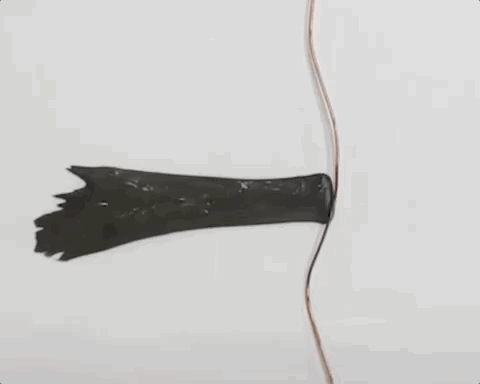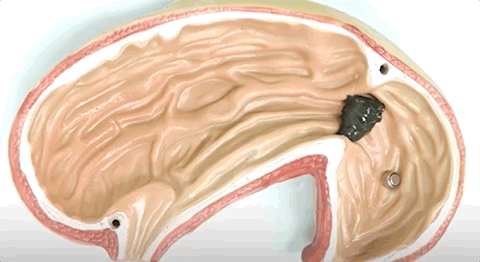Researchers at the Chinese University of Hong Kong have developed a robotic slime that could help reduce the need for invasive surgery and help with other medical operations.

The flexible, jellylike substance was partially inspired by the superhero film Venom and is made up of magnetic particles that can be controlled by external magnets.
One possible application would be to help doctors retrieve objects that have been accidentally swallowed by putting the slime inside the digestive system, letting it swallow the object and then taking it out.
Zhang Li, a professor at Chinese University who co-created the slime robot, said he expected it could be used as a surgical tool.

“It has extremely large deformation capability … It’s like liquid. When you rotate the magnet, it behaves like an octopus arm to grab an object or wrap it up,” Zhang said on Friday.
The researchers also say it can be used with the help of a robotic arm.
“We can put the magnet on the robotic arm and control the slime robot in the human digestive system by moving the robotic arm,” he said.

“The next step will be more challenging because we need to face a more complex environment in the human body, but it is also more meaningful.”
The study was published in the journal Advanced Functional Materials late last month.
Magnetic soft-bodied robots provide ideal solutions for minimally invasive surgery, micromanipulation, and targeted drug delivery, but the existing models have many limitations, according to the researchers.
Sun Mengmeng, a Chinese University post-doctoral fellow and the lead author of the study, said some were based on the elastomer, a type of rubbery polymer, but had limited deformation abilities.
Others based on fluids can change shape more easily but are unstable and poorly adapted to their environment.
Sun said he was inspired by the film Venom in which the lead character gains superpowers after an alien species enters his body.
“When we watched Venom, we felt that capability was what we wanted – to find something with good deformation capability as well as good adaptability to the environment,” he said.
“We start from there to find the material and then turn it into the slime robot.”
The study warned that the magnetic particles in the slime were toxic, so the researchers coated it with a layer of silica to form a protective surface.
Zhang said the slime had low toxicity, adding: “Its safety depends on where you want to use it in the body and how long you will keep it inside the body.
“We don’t expect to put the slime robot inside of the body for more than 24 hours … We hope that it can be used as a surgical tool and taken it out after the surgery.”
He added that they would apply for an animal license to test the technology, adding: “If the technology is promising, we can do some human experimentation in five years.”




GIPHY App Key not set. Please check settings